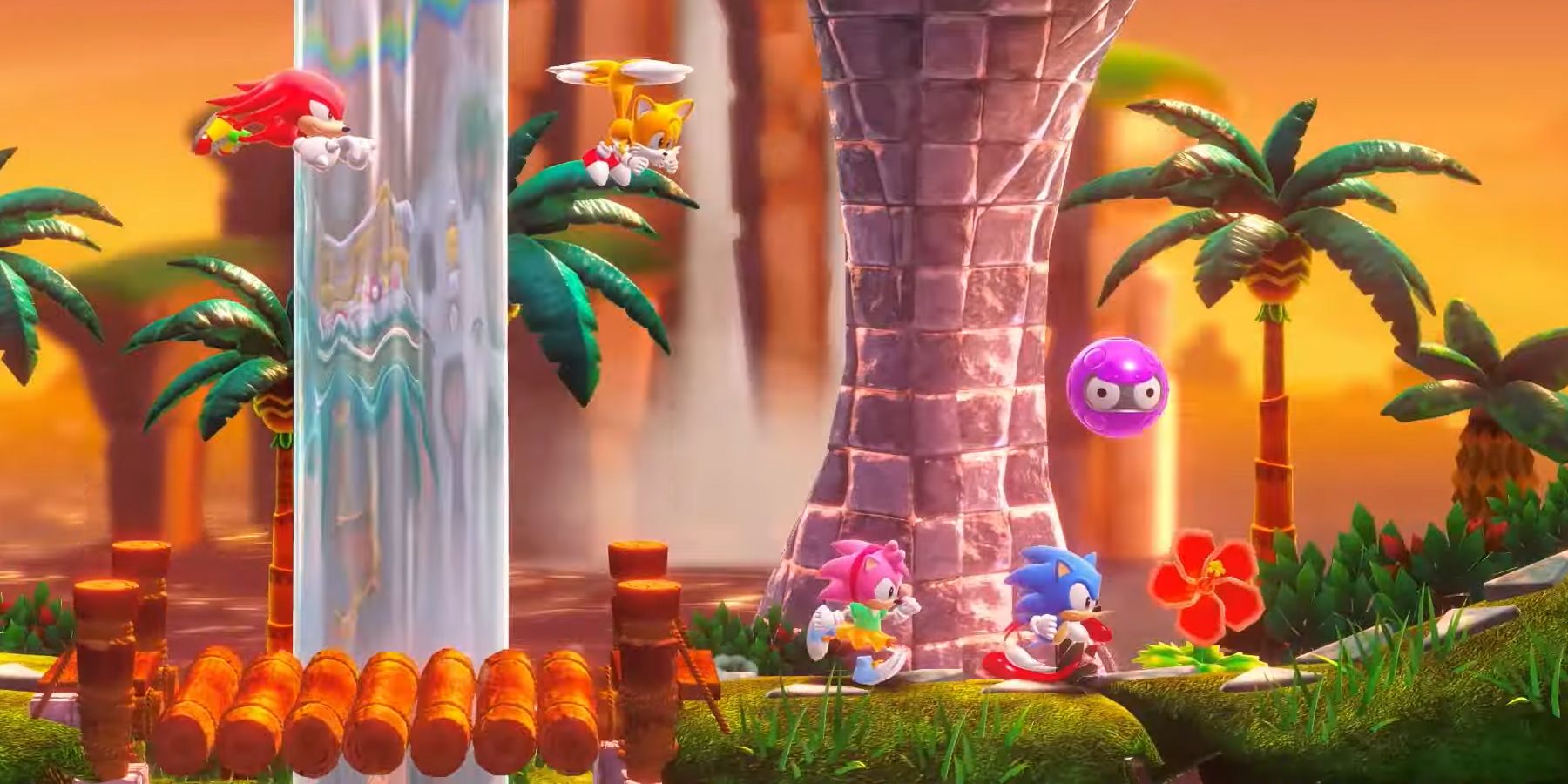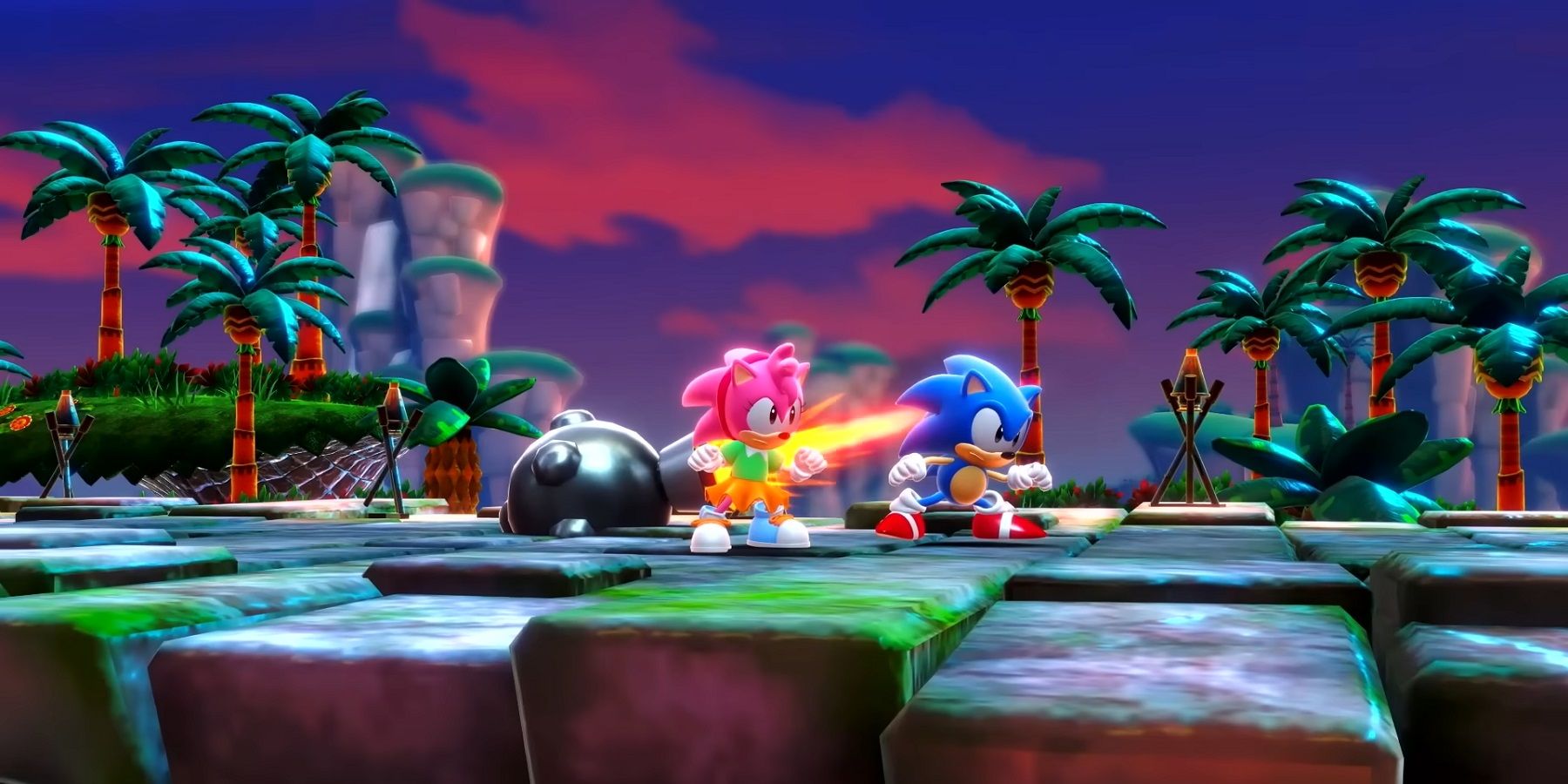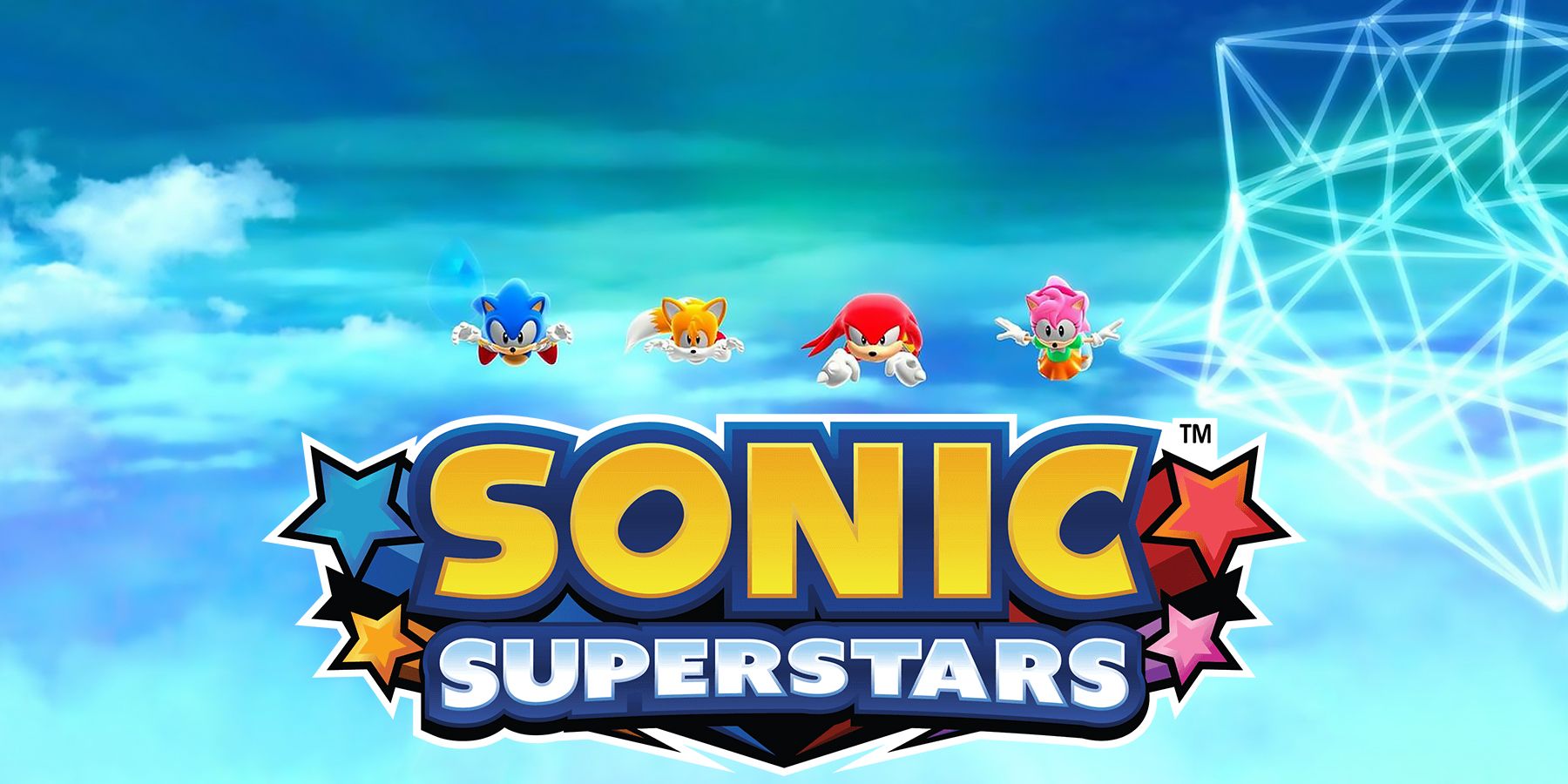On September 23, 2023, Sonic CD celebrates its 30th anniversary. Looking back, this game's innovative concepts greatly influenced the series' future direction.
Gathering a consensus among Sonic fans is a challenging task, especially when it comes to discussing Sonic CD. This particular game stands out as an anomaly in terms of its game design, resulting in contrasting opinions within the fandom. However, the reasons behind its deviation from the traditional Sonic formula are truly intriguing. In many ways, Sonic CD, with its time-travel theme, seems like the starting point of an alternate developmental path that the Sonic series could have pursued, but ultimately did not.
Following the incredible success of the first Sonic the Hedgehog game, Sega wasted no time in creating sequels. Yuji Naka and Hirokazu Yasuhara, key members of Sonic's development team, teamed up with Mark Cerny, who would go on to design the PlayStation console, at Sega Technical Institute in the United States. Joined by a few other Japanese staff members, they worked on Sonic the Hedgehog 2, a unique collaboration between America and Japan. Meanwhile, the rest of the Sonic Team remained in Japan, working on a Sonic game specifically for the Mega-CD (known as Sega CD in the west). Although the Mega-CD was struggling in the Japanese market, it showed promise overseas, much like the successful Mega Drive (or Genesis) console. With Nintendo preparing to release their own CD system add-on, featuring Sonic on Sega CD would provide a significant advantage in the anticipated CD-ROM wars.
Initially, the idea for Sonic CD was to create an enhanced remake of the original game, following the trend set by other Mega-CD titles. However, this concept was quickly discarded. Sonic had already proven to be a system-seller, and it was believed that a completely new Sonic game, fully utilizing the capabilities of the Sega CD hardware, would drive sales of the more expensive CD systems worldwide. (I, personally, was thrilled at the prospect of Sonic coming to Sega CD!) Since online communication and collaboration across continents was not yet feasible, there was limited interaction between the two Sonic development teams. This led to distinct differences in gameplay ideas, visual style, and technical expertise between the Japanese team working on Sonic CD and the US-based team working on Sonic 2, akin to the unique evolution of species in the Galapagos Islands.
Despite limited contact, both game teams shared their basic concepts during the planning stages of Sonic CD and Sonic 2. Initially planned for Sonic 2, the idea of time travel was eventually dropped in favor of utilizing the additional CD-ROM storage space in Sonic CD. This allowed for the creation of multiple variations of each level in different time periods. Furthermore, Sonic CD introduced a progressive storyline where players could observe Dr. Eggman's corrupting influence increasing throughout the stages. Although this vision didn't fully materialize due to a stage being removed early in development, remnants of the concept can still be observed in the final game.
Don't Cast Hollywood Celebs In Video Games | Spot On
Cyberpunk 2077: Phantom Liberty – Official "All In" Trailer (feat. Idris Elba)
Atomic Heart – DLC#2 | SPECIAL TGS2023 TEASER
Super Mario Bros. Wonder – Gameplay Overview Trailer
Tales of the Shire - Official Teaser Trailer
Dragon's Dogma 2 - Combat Preview (Hands-On)
Firearms Expert Reacts to Payday 3’s Guns
DNF DUEL|Official Battle Mage Character Reveal Trailer
Honkai Impact 3rd Part 2 - Gameplay First Look Trailer
Evil Wizard - Official Launch Trailer
Kirby & The Amazing Mirror – Game Boy Advance – Nintendo Switch Online + Expansion Pack Trailer
ShareLink
Embed
Size:640 × 360480 × 270 Start at:
End at:
Autoplay
Loop
Want us to remember this setting for all your devices?
Sign up or Sign in now!
Please use a html5 video capable browser to watch videos.This video has an invalid file format. 00:00:00 HTML5
Auto
Report a problem Sorry, but you can't access this content!Please enter your date of birth to view this video
January February March April May June July August September October November December 1 2 3 4 5 6 7 8 9 10 11 12 13 14 15 16 17 18 19 20 21 22 23 24 25 26 27 28 29 30 31 Year 2023 2022 2021 2020 2019 2018 2017 2016 2015 2014 2013 2012 2011 2010 2009 2008 2007 2006 2005 2004 2003 2002 2001 2000 1999 1998 1997 1996 1995 1994 1993 1992 1991 1990 1989 1988 1987 1986 1985 1984 1983 1982 1981 1980 1979 1978 1977 1976 1975 1974 1973 1972 1971 1970 1969 1968 1967 1966 1965 1964 1963 1962 1961 1960 1959 1958 1957 1956 1955 1954 1953 1952 1951 1950 1949 1948 1947 1946 1945 1944 1943 1942 1941 1940 1939 1938 1937 1936 1935 1934 1933 1932 1931 1930 1929 1928 1927 1926 1925 1924 1923 1922 1921 1920 1919 1918 1917 1916 1915 1914 1913 1912 1911 1910 1909 1908 1907 1906 1905 1904 1903 1902 1901 1900 By clicking 'enter', you agree to Our Website's Terms of Use and Privacy Policy
The core design of Sonic CD revolved around the concept of time travel. Sonic had the ability to transition between different time periods by building up enough speed. This would take him to the past or either positive or negative futures. The layouts and gimmicks of the levels would be similar yet different across the different time periods. For example, a hollow log found in the past would be partially decayed in the present and almost non-existent in the future. Additionally, the robotic enemies would appear newly constructed in the past but would be worn-down and damaged in the distant future variations of the levels. Each time period would also have its own distinct visual design and soundtrack. Interestingly, the past stages would utilize hardware-generated sound instead of the planned redbook audio.
In order to accommodate the time-travel mechanics and create various versions of each stage, Sonic CD's level design deviated significantly from what was done in Sonic 2. In Sonic 2, the levels had various speed elements and were mostly linear. While there were multiple paths to take, once a path was chosen, there was limited opportunity to change it. In contrast, the levels in Sonic CD were more densely packed but also less restrictive. Players had the freedom to backtrack and explore every corner of each stage in every time period if they desired. In fact, it was often necessary to do so in order to find areas where Sonic could build up enough speed to activate the time warp.
Stage gimmicks in Sonic CD are characterized by a sense of wild experimentation. The game introduces design elements that are unique and distinct from other classic Sonic games, with only Sonic Mania coming close, but not utilizing everything. These features include foreground/background shifting, bouncy brass-tubing tunnels, spinning pistons, glass spheres that break satisfyingly, and the infamous electrified floor in Wacky Workbench that propels Sonic upwards when touched at specific times. While Wacky Workbench is often criticized as a poor Sonic Zone, I appreciate its audacity, as few platform games would dare to attempt such a bizarre gimmick. Each stage and time zone is filled with its own distinctive quirks, making exploration the ideal way to enjoy the game. Sonic CD maintains the fun speed and momentum of other Sonic games but also encourages players to slow down and thoroughly explore, which some Sonic fans may find contrary to their usual preferences.
Taking the time to thoroughly explore the levels not only uncovers hidden secrets and playful gimmicks, but also provides an opportunity to discover the device Eggman is using to create a bleak future. Additionally, this exploration allows players to appreciate the stunning visuals. The Mega CD, while a powerful add-on, couldn't compensate for one of the limitations of the original Genesis/Mega Drive hardware: the on-screen color restrictions. Many games on the system were known for their grainy and washed-out appearance compared to contemporary SNES titles. However, when looking at the various stages of Sonic CD, one would never guess that there was a restriction of only 64 on-screen colors. The game's art director, Hiroyuki Kawaguchi, and art designer, Kazuyuki Hoshino, crafted visuals that perfectly embodied Sega of Japan's early-'90s aesthetic of vibrant, high-tech geometry and computer graphics. The stages, apart from the bad future ones intentionally designed to convey despair and misery, showcase a beautiful and vivid world that defies the hardware limitations.
Sonic 2 was released in late 1992 during the preparation of the first build of the game by the Sonic CD team for Yuusei Sega World. The game was eventually released in Japan in the summer of 1993, but not before undergoing numerous revisions, with small changes made until the last minute. As is common in game development, ideas were scaled back and altered. The special stage transformed from an expanded Sonic 1 rotating arena to a balloon-popping, UFO-chasing experience (with the UFOs changing shape multiple times). The redbook audio was dropped from the Past soundtracks, and the time-travel interstitial screen went through various visual and audio effects. However, the biggest omission was the stage known as R2. The zone numbers in the game's stage select skipped from 1 to 3, indicating that stage 2 was cut at some point. Development images of mysterious underground ruins have intrigued fans for years, but despite re-releases with development-related extras, there is still limited information about what was originally planned. Throughout the years, fans have managed to find and preserve numerous development builds of Sonic CD, offering snapshots into the game's evolution.
There are many noteworthy aspects to discuss about Sonic CD, including the introduction of Amy Rose and Metal Sonic, the controversy surrounding the replacement of music in the North American release, and the various reissues. However, its unique design, distinct from any other Sonic game of the time (due to peculiar circumstances), is what has made it truly memorable. While it did not achieve the sales success Sega had hoped for the Mega-CD, its aesthetic design has become synonymous with classic Sonic and continues to be a topic of discussion among fans. With Sonic Superstars bringing back the director of Sonic CD in a design role and some original Sonic CD staff still working at Sega, I am eagerly anticipating the extent to which Sonic CD's influence will be seen in Superstars. Maybe we will even see the return of the Wacky Workbench floors... I can't be the only one who would love that, right?













